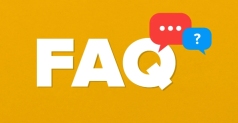A virus can change router settings at 192.168.1.1 only if it accesses the admin interface using known or weak credentials. 2. Once inside, malware can hijack DNS, disable firewalls, change passwords, or install backdoors, as seen with threats like VPNFilter. 3. Remote administration increases risk by allowing external access, but internal infections can still exploit weak local security. 4. Protect your router by changing default passwords, disabling remote access, updating firmware, using strong Wi-Fi passwords, scanning for malware, and regularly checking settings; if compromised, reboot, reset, update, and reconfigure securely. Poor configuration, not the IP itself, is the main vulnerability.

Yes, a virus or malware on a device connected to your network can potentially change your router settings at 192.168.1.1 — but only under certain conditions.

Here’s how it works and what you need to know:
1. The virus needs access to your router’s admin interface
Most home routers use 192.168.1.1 as the default gateway and admin login page. If a device on your network is infected with malware, and that malware can reach the router’s web interface (usually via HTTP or HTTPS), it might attempt to log in and change settings — but only if it knows the login credentials.

- Default credentials are a big risk: Many older or poorly configured routers still use default usernames and passwords like admin/admin or admin/password. Malware can exploit this using built-in credential lists.
- Weak or reused passwords make it easier for automated attacks to succeed.
2. How malware can exploit your router
Once inside, malicious software can:
- Change your DNS settings to redirect traffic to phishing or malicious sites (DNS hijacking).
- Open ports or disable your firewall (exposing devices).
- Change Wi-Fi passwords to lock you out or spread to other devices.
- Install persistent backdoors or update firmware with malicious versions.
Some known malware families (like VPNFilter or Moose) have specifically targeted home routers in this way.

3. Remote access increases risk
If you’ve enabled remote administration on your router (e.g., allowing access to 192.168.1.1 from the internet), the risk goes up significantly. Attackers can then target your router directly from outside your network, especially if they can guess the IP or port.
Even without remote access, local network infections can still pose a threat if the malware spreads internally.
4. How to protect your router
To reduce the risk:
- ✅ Change the default admin password to a strong, unique one.
- ✅ Disable remote administration unless absolutely necessary.
- ✅ Keep your router firmware updated — manufacturers often patch security flaws.
- ✅ Use a strong Wi-Fi password to prevent unauthorized devices from joining.
- ✅ Scan your devices regularly for malware using trusted antivirus software.
- ✅ Check your router settings occasionally, especially DNS and admin password, to detect unauthorized changes.
If you suspect your router has been compromised:
- Reboot it.
- Reset to factory settings if needed.
- Update firmware.
- Reconfigure with strong credentials.
Basically, while the router itself isn’t “infected” like a computer, malware on your network can manipulate it if security is weak. The real vulnerability is poor configuration — not the IP address itself.
The above is the detailed content of Can a virus change my 192.168.1.1 router settings?. For more information, please follow other related articles on the PHP Chinese website!
 How to safely eject a U disk?Aug 30, 2025 am 06:53 AM
How to safely eject a U disk?Aug 30, 2025 am 06:53 AMTosafelyejectaUSBdriveonWindows,ensurenoprogramsareusingit,thenusetheSafelyRemoveHardwareiconorright-clickinFileExplorerandwaitforthe“Safetoremovehardware”message.2.OnmacOS,dragthedrivetotheTrash(whichturnsintoanEjecticon),right-clickandselectEject,o
 How to fix printer not activated error code 30Aug 30, 2025 am 06:48 AM
How to fix printer not activated error code 30Aug 30, 2025 am 06:48 AMCheckphysicalconnectionsandprinterstatusbypowercyclingtheprinter,ensuringsecureUSBorcorrectwirelessconnection,andconfirmingtheprinterisonlineinDevicesandPrinters;2.SetyourprinterasdefaultviaControlPaneltoresolveactivationconfusion;3.Reinstallorupdate
 What is the difference between 192.168.1.1 and 192.168.0.1?Aug 30, 2025 am 06:08 AM
What is the difference between 192.168.1.1 and 192.168.0.1?Aug 30, 2025 am 06:08 AMThedifferencebetween192.168.1.1and192.168.0.1istheirsubnet,with192.168.1.1usedin192.168.1.xnetworksand192.168.0.1in192.168.0.xnetworks;1.BothareprivateIPaddresseswithinthe192.168.0.0/16range,notroutableonthepublicinternet;2.Thedistinctionliesinthethi
 How to Create a PDF Using Microsoft Print to PDF?Aug 30, 2025 am 06:03 AM
How to Create a PDF Using Microsoft Print to PDF?Aug 30, 2025 am 06:03 AMOpenthedocumentyouwanttoconvert,suchasaWordfile,webpage,orExcelsheet.2.AccessthePrintmenubypressingCtrl PorselectingFile>Print.3.SelectMicrosoftPrinttoPDFastheprinterfromthedropdownmenu.4.ClickPrint,thenchoosethesavelocation,enterafilename,andclic
 Why is my caller ID not showing upAug 30, 2025 am 05:39 AM
Why is my caller ID not showing upAug 30, 2025 am 05:39 AMCheckyourphone’scallerIDsettingandensureit’senabled—oniPhone,gotoSettings>Phone>ShowMyCallerID;onAndroid,navigatetoPhoneapp>Settings>Additionalsettings>CallerIDandselectShownumber.2.ConfirmwithyourcarrierthatcallerIDisactivatedonyourac
 What is MEMORY_MANAGEMENT blue screen errorAug 30, 2025 am 05:24 AM
What is MEMORY_MANAGEMENT blue screen errorAug 30, 2025 am 05:24 AMThe blue screen error "MEMORY\_MANAGEMENT" is usually caused by hardware failure, driver conflict or system file corruption. Solutions include: 1. Check whether the memory stick is loose or damaged, clean the gold finger and re-plug it; 2. Use Windows memory diagnostic tools or MemTest86 to detect; 3. Update or roll back the graphics card, motherboard chipset and other drivers; 4. Run the sfc/scannow and DISM commands to repair the system files; 5. Uninstall the security software or overclocking tools that may conflict; 6. Try to start cleanly to eliminate interference from third-party software; 7. Restore the default frequency settings to troubleshoot overclocking problems; 8. Check whether the power supply is sufficient. The root cause of the problem can be found by gradually checking most of the cases.
 How to fix error 0x8007007bAug 30, 2025 am 05:18 AM
How to fix error 0x8007007bAug 30, 2025 am 05:18 AMError code 0x8007007b means "invalid file or path name", which is often caused by excessive path length or error in format. 1. Check the path length and try to move the file to a short path such as C:\Files; 2. Enable long path support through registry settings and set the LongPathsEnabled value to 1; 3. Check and remove illegal characters in the path such as ?, etc.; 4. Use administrator permissions to run the program or command prompt; 5. Enable Win32 long path option through group policy or registry. In most cases, the above method can be used to solve the problem.
 How to recover deleted files from a U disk?Aug 30, 2025 am 05:00 AM
How to recover deleted files from a U disk?Aug 30, 2025 am 05:00 AMStop using the USB flash drive immediately to prevent data from being overwritten; 2. Use data recovery software such as Recuva, EaseUSDataRecoveryWizard to scan and recover files, and save the recovered files to the computer hard drive instead of the USB flash drive; 3. Check the Windows Recycle Bin, although external device files usually do not enter the Recycle Bin; 4. Advanced users can use the command prompt to execute the chkdsk and attrib commands to try to display hidden files; 5. If the software method is invalid and the data is important, you can seek professional data recovery services. As long as it is not overwritten and operated properly, most deleted files can be restored successfully.

Hot AI Tools

Undress AI Tool
Undress images for free

Undresser.AI Undress
AI-powered app for creating realistic nude photos

AI Clothes Remover
Online AI tool for removing clothes from photos.

Clothoff.io
AI clothes remover

Video Face Swap
Swap faces in any video effortlessly with our completely free AI face swap tool!

Hot Article

Hot Tools

Atom editor mac version download
The most popular open source editor

MinGW - Minimalist GNU for Windows
This project is in the process of being migrated to osdn.net/projects/mingw, you can continue to follow us there. MinGW: A native Windows port of the GNU Compiler Collection (GCC), freely distributable import libraries and header files for building native Windows applications; includes extensions to the MSVC runtime to support C99 functionality. All MinGW software can run on 64-bit Windows platforms.

ZendStudio 13.5.1 Mac
Powerful PHP integrated development environment

mPDF
mPDF is a PHP library that can generate PDF files from UTF-8 encoded HTML. The original author, Ian Back, wrote mPDF to output PDF files "on the fly" from his website and handle different languages. It is slower than original scripts like HTML2FPDF and produces larger files when using Unicode fonts, but supports CSS styles etc. and has a lot of enhancements. Supports almost all languages, including RTL (Arabic and Hebrew) and CJK (Chinese, Japanese and Korean). Supports nested block-level elements (such as P, DIV),

SecLists
SecLists is the ultimate security tester's companion. It is a collection of various types of lists that are frequently used during security assessments, all in one place. SecLists helps make security testing more efficient and productive by conveniently providing all the lists a security tester might need. List types include usernames, passwords, URLs, fuzzing payloads, sensitive data patterns, web shells, and more. The tester can simply pull this repository onto a new test machine and he will have access to every type of list he needs.






